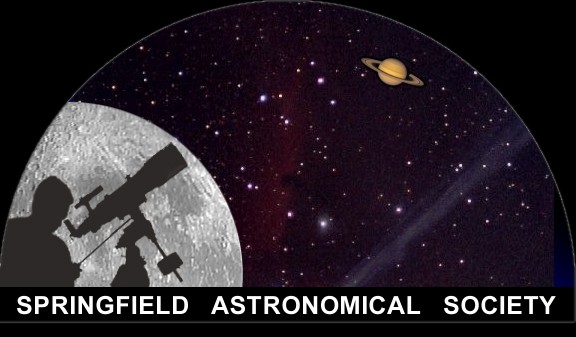12/19/2025
| Member Login: |
Collection of Astrophotos
By Club Members
<< First | << Previous 10 Pictures | Next 10 Pictures >> | Last >>
There are currently 278 astrophotos in the gallery..
Jim Aldrich 10/19/2014 6:13:20 PM NGC 925 is located about 30mly distant in the constellation Triangulum. It is classified as a barred galaxy with a bent bar in its core. Around ten hours of exposures were needed to capture the image through LRGB filters. Image acquisition in TheSkyX software, Stacked & Registered in CCDStack, finishing touches in Photoshop 6. | Jim Aldrich 10/1/2014 3:21:56 AM The famous Ring Nebula (M57). This planetary nebula is about 1ly wide and 2000ly distant. Twenty 50sec integrations were acquired and stacked with MiloSlick video software. Final processing in Photoshop. Celestron 9.25" SCT 6.3 FR @ FL 1480mm Celestron AVX Mount MallinCam EX - Unguided | Jim Aldrich 9/29/2014 5:49:38 PM Here is my attempt to extract galaxy IC 342 through the dusty disk of our home galaxy. It is located in the constellation Camelopardalis, about 10mly distant. Since the galaxy is obscured by dust it requires long 10min exposures to reveal any details. This image was created from about 13 hours of exposures through Luminous, Red, Green, & Blue filters. Journey's End Observatory Planewave CDK-17 Paramount ME-II SBIG STXL-11002M Camera SBIG STXL-FW8G Guided Filter Wheel AO-X Adaptive Optics |
Jim Aldrich 8/25/2014 4:59:55 PM NGC 7331 is located in Pegasus about 50 mly away. It is surrounded by several background galaxies that are nearly 500 mly distant. NGC 7331 was discovered by William Herschel in 1784 at Deer Lick Gap, North Carolina. Journey's End Observatory Planewave CDK-17 Paramount ME-II SBIG STXL-11002M Camera SBIG STXL-FW8G Guided Filter Wheel AO-X Adaptive Optics | Edward Henry (AstroEd) https://www.flickr.com/photos/100203402@N04/ 7/27/2014 2:06:56 AM Images taken with Lodestar guide cam and Lodestar Live 0.9 M13 was discovered by Edmond Halley in 1714, and catalogued by Charles Messier on June 1, 1764. | Edward Henry (AstroEd) https://www.flickr.com/photos/100203402@N04/ 7/27/2014 2:03:49 AM Images taken with Lodestar guide cam and Lodestar Live 0.9 Messier 3 (also known as M3 or NGC 5272) is a globular cluster of stars in the northern constellation of Canes Venatici. It was discovered by Charles Messier on May 3, 1764,[7] and resolved into stars by William Herschel around 1784. |
Edward Henry (AstroEd) https://www.flickr.com/photos/100203402@N04/ 7/27/2014 2:01:20 AM Images taken with Lodestar guide cam and Lodestar Live 0.9 The Whirlpool Galaxy is an interacting grand-design spiral galaxy with a Seyfert 2 active galactic nucleus in the constellation Canes Venatici. Distance to Earth: 23,160,000 light years Apparent mass: ~160 billion M☉ Magnitude: 8.4 Absolute magnitude: 8.4 Constellation: Canes Venatici | Edward Henry (AstroEd) https://www.flickr.com/photos/100203402@N04/ 7/27/2014 1:59:53 AM Images taken with Lodestar guide cam and Lodestar Live 0.9 The Ring Nebula is a planetary nebula in the northern constellation of Lyra. Such objects are formed when a shell of ionized gas is expelled into the surrounding interstellar medium by a red giant star. Age: 7,000 years Magnitude: 8.8 Distance to Earth: 2,283 light years Absolute magnitude: -0.2 | Edward Henry 7/27/2014 1:57:45 AM The Omega Nebula, also known as the Swan Nebula, Checkmark Nebula, Lobster Nebula, and the Horseshoe Nebula is an H II region in the constellation Sagittarius. It was discovered by Philippe Loys de Chéseaux in 1745. Magnitude: 6 |
Edward Henry 7/27/2014 1:55:35 AM The Trifid Nebula is an H II region located in Sagittarius. It was discovered by Charles Messier on June 5, 1764. Its name means 'divided into three lobes'. Distance to Earth: 5,200 light years Magnitude: 6.3 |
<< First | << Previous 10 Pictures | Next 10 Pictures >> | Last >>
